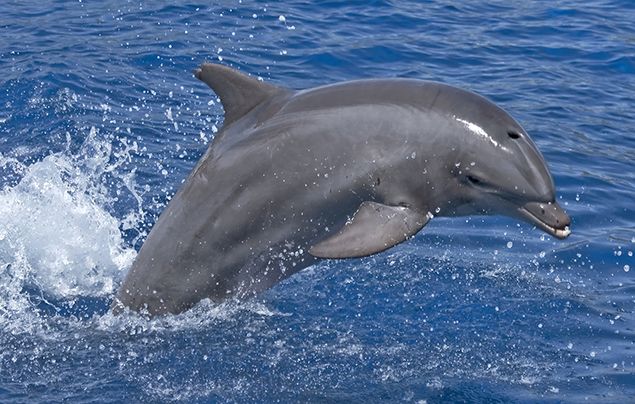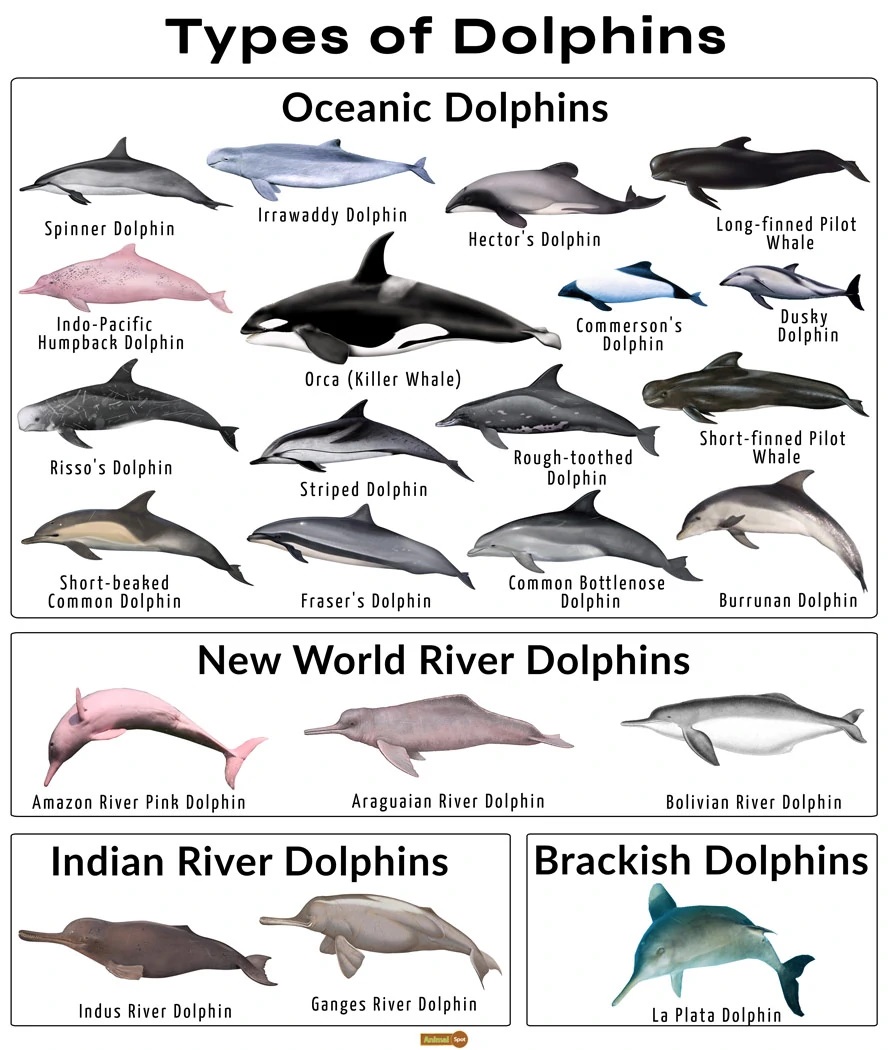Exactly How Dolphin Facts Display Their Value to Marine Biodiversity
Exactly How Dolphin Facts Display Their Value to Marine Biodiversity
Blog Article
Dive Into the Ocean: Fascinating Dolphin Truths for Sea Lovers
The globe of dolphins offers a fascinating junction of knowledge, social behavior, and eco-friendly value. From their complicated interaction techniques to their remarkable analytical capabilities, dolphins challenge our understanding of pet intelligence.
Dolphin Types Diversity
Variety is a hallmark of the dolphin family, including a large array of types that exhibit distinct physical characteristics, actions, and habitats. The household Delphinidae, frequently known as nautical dolphins, comprises approximately 37 types, each adjusted to certain ecological niches. For instance, the bottlenose dolphin (Tursiops truncatus) is renowned for its intelligence and versatility, growing in both seaside and open sea atmospheres.
In comparison, the orca (Orcinus whale), typically referred to as the killer whale, is the biggest member of the dolphin family members and is characterized by its striking black-and-white pigmentation. Orcas demonstrate complex social structures and hunting methods, showcasing the behavior diversity within the family. Various other species, such as the rewriter dolphin (Stenella longirostris), are kept in mind for their acrobatic displays and preference for warmer waters, highlighting the adaptability of dolphins to different marine ecosystems.
Furthermore, river dolphins, including the pink river dolphin (Inia geoffrensis), live in freshwater environments, even more illustrating the comprehensive environments that dolphins inhabit. Dolphin Facts. This extraordinary diversity not just enhances aquatic communities however likewise emphasizes the importance of preservation initiatives to protect these exceptional creatures and their environments
Social Behavior and Interaction
The elaborate social actions and communication techniques of dolphins are important parts of their presence, helping with group cohesion and enhancing survival. These extremely intelligent marine mammals display facility social structures, often creating sheathings that can range from a few individuals to over a hundred. Within these groups, dolphins participate in behaviors such as participating hunting, social play, and shared security, which foster solid bonds amongst participants.
Dolphins utilize a sophisticated variety of articulations, consisting of clicks, whistles, and body movement, to communicate information and reveal emotions. Their trademark whistles work as distinct identifiers, similar to names, making it possible for people to call out to each other. This singing interaction is matched by non-verbal signals, such as leaping, slapping the water, and integrated swimming, which additionally improves their communications.

Distinct Feeding Habits
Distinct feeding behaviors define dolphins, showcasing their versatility and knowledge in different marine atmospheres. These marine mammals are recognized for their varied diet plans, which mostly include fish, squid, and shellfishes. Their hunting strategies can vary substantially, commonly tailored to the specific target and environmental problems.
One noteworthy method is participating hunting, where dolphins operate in teams to herd institutions of fish right into limited formations, making it simpler for individuals to catch their dish. This social habits not just improves their feeding performance however also strengthens social bonds within the shell. Furthermore, dolphins have actually been observed utilizing a technique called "fish-whacking," where they utilize their tails to stun or disorient fish, assisting in simpler capture.
One more fascinating feeding practice is echolocation, which allows dolphins to identify prey even in murky waters. By sending out acoustic waves and interpreting the returning mirrors, they can recognize the size, shape, and area of their targets. This remarkable capacity emphasizes their versatility in different environments, from shallow seaside areas Website to deeper oceanic waters. In general, the one-of-a-kind feeding routines of dolphins highlight their role as knowledgeable predators within the aquatic ecosystem, showing both knowledge and resourcefulness.
Knowledge and Issue Resolving
Their intelligence is apparent in their problem-solving skills, social communications, and capability for knowing. Study has actually demonstrated that dolphins can make use of tools, such as making use of aquatic sponges to secure their rostrums while foraging on the seafloor.
Furthermore, dolphins exhibit sophisticated interaction abilities, utilizing a complex system of clicks, whistles, and body movement. Dolphin Facts. This interaction is essential for collaborating group activities, such as hunting and socializing, highlighting their ability to function jointly towards a common objective. Their ability to recognize abstract principles, consisting of self-recognition in mirrors, further emphasizes their cognitive class
In controlled researches, dolphins have revealed an ability to address challenges and do jobs that need both memory and essential thinking. These communications show not only knowledge but additionally a willingness to engage with their atmosphere in unique means. Generally, the cognitive prowess of dolphins puts them amongst the most intelligent types on earth, promoting a deeper appreciation for their role in marine environments.
Conservation and Environmental Influence
Conservation initiatives targeted at protecting marine environments are important for preserving dolphin populations and their habitats. Dolphins are very sensitive to ecological changes, and their survival is intricately linked to the wellness of oceanic ecological communities. Overfishing, contamination, and climate change pose considerable hazards to both dolphins and their environments.
Overfishing disrupts the food chain, leading to a decrease in target species necessary for dolphin survival. Moreover, contaminants such as chemicals and plastics collect in aquatic settings, endangering dolphins through ingestion and bioaccumulation. Increased water temperature levels and sea acidification, repercussions of environment adjustment, better threaten the fragile equilibrium of aquatic ecosystems, influencing dolphin breeding and migratory patterns.
By focusing on preservation initiatives, we can make certain that future generations enjoy the charm and vigor of dolphins and the seas they inhabit. Securing aquatic communities is not simply about conserving dolphins; it is regarding maintaining the elaborate web of life that maintains us all.
Final Thought
Dolphins exhibit the complexity and splendor of marine life through their diverse varieties, intricate social structures, and advanced cognitive capabilities. Their distinct feeding practices and interaction techniques further illustrate their flexibility and knowledge. As essential parts of aquatic communities, dolphins underscore the need of ongoing preservation initiatives to protect their habitats. Safeguarding these remarkable animals is vital not only for their survival however likewise for keeping the health and equilibrium of ocean atmospheres around the world.
Various other species, such as the spinner dolphin (Stenella longirostris), are noted for their acrobatic display screens and go preference for warmer waters, highlighting the versatility of dolphins to various marine environments.
On the whole, the special feeding behaviors of dolphins highlight their duty as competent killers within the marine ecological community, demonstrating both intelligence and resourcefulness.
On the whole, the cognitive expertise of dolphins positions them among view it the most smart species on the earth, promoting a deeper recognition for their function in aquatic communities.

Report this page